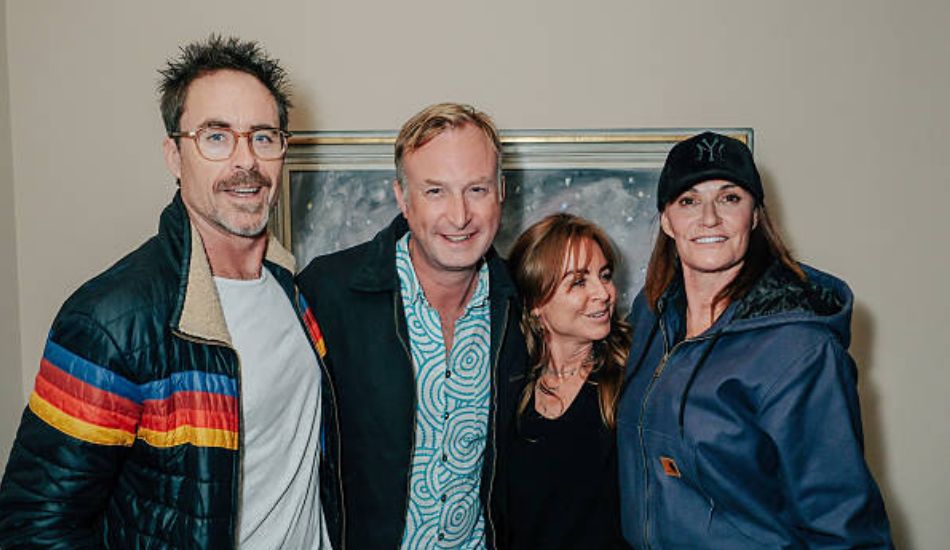Gislinde Kühbeck – Life, Family, and the Untold Story of Klaus Kinski’s First Wife

Gislinde Kühbeck is best known as the first wife of the German actor Klaus Kinski — one of the most controversial and intense figures in European cinema. While Klaus Kinski’s name became synonymous with raw genius and cinematic rebellion, Gislinde Kühbeck lived her life largely away from the limelight. Despite her connection to one of Germany’s most famous and tempestuous performers, she managed to maintain a quiet, private existence.
Historical records describe her as a singer and an artist, but much of her biography remains shrouded in mystery. What is known about Gislinde Kühbeck primarily comes through references in biographies of Kinski or their daughter, the actress and writer Pola Kinski. Gislinde’s story is therefore intertwined with the early years of Klaus Kinski’s life — before his fame exploded in the 1960s and 1970s through films like Aguirre, the Wrath of God and Nosferatu the Vampyre.
Early Life and Background
Public records about Gislinde Kühbeck’s early life are scarce. Most major sources, including Britannica and Wikipedia, note her only in connection to Klaus Kinski, describing her simply as “his first wife, a singer named Gislinde Kühbeck.”
Her date of birth, childhood, and family background are not publicly documented. This lack of detail may be due to her choice to remain outside the celebrity world, or perhaps to the limited media interest in her personal life during the post-war years when she was active.
Some unverified German-language archives suggest that she was a performer — possibly trained in singing or the arts — which aligns with Kinski’s early creative circles in post-war Berlin. It was during this era of artistic chaos and reconstruction that Gislinde Kühbeck and Klaus Kinski met.
Marriage to Klaus Kinski
Gislinde Kühbeck married Klaus Kinski in 1952, a time when Kinski was still an emerging actor struggling to find consistent work. Their marriage lasted until 1955, and while it was brief, it was an important period in both of their lives.
At the time of their marriage, Kinski had recently returned from his early experiences as a German soldier during World War II and his subsequent internment as a prisoner of war. He was rebuilding his life and career through small stage performances and voice work.
Gislinde supported him during those formative years — a time marked by both artistic aspiration and personal instability. Their relationship, though passionate, was said to be turbulent, reflecting Kinski’s unpredictable temperament.
Despite the eventual breakdown of their marriage, their union produced one of the most important relationships in Kinski’s life: their daughter Pola Kinski.
Gislinde Kühbeck and Her Daughter Pola Kinski
Gislinde Kühbeck’s daughter, Pola Kinski, was born on March 23, 1952, in Berlin. Pola would later become an actress and author, gaining attention both for her acting and for her autobiography Kindermund (Child’s Mouth), in which she detailed her experiences growing up with her famous but deeply troubled father.
In interviews, Pola described her mother, Gislinde, as a kind and artistic woman who loved music and tried to create a stable environment for her daughter despite the instability surrounding Klaus Kinski. After her separation from Kinski, Gislinde raised Pola largely on her own, protecting her from the chaos that often accompanied her father’s career.
While Pola Kinski has spoken extensively about her father in the media, she has kept her mother’s private life relatively out of public discussion — perhaps honoring Gislinde’s preference for privacy. What emerges from these rare glimpses is the portrait of a woman who was caring, gentle, and far removed from the wild energy that defined Kinski’s world.
Career and Life Beyond the Spotlight
Unlike her famous husband, Gislinde Kühbeck did not pursue a career in acting or film. Sources describe her as a singer, and some archival material suggests she was also a painter. According to one reference, she once created an aquarelle (a watercolor painting) for Klaus Kinski — an indication of her artistic leanings.
Her connection to the art world makes sense in the context of post-war Germany, where artists and performers often moved in the same social circles. Music, theater, and visual art were central to Berlin’s cultural revival, and Gislinde’s presence in that milieu would have been natural for a creative soul.
After her divorce from Kinski in 1955, Gislinde appears to have stepped away from public life. There are no known interviews, public appearances, or publications by her in later years. This discretion contrasts sharply with Kinski’s notoriously volatile personality and his later celebrity status.
Gislinde Kühbeck’s Relationships After Kinski
There is no public record of Gislinde Kühbeck remarrying after her divorce from Klaus Kinski. Unlike Kinski, who went on to have two more marriages (with actress Brigitte Ruth and later with Minhoi Geneviève Loanic), Gislinde kept her private life out of the headlines.
Whether she had later romantic relationships, additional children, or a long-term partner remains unknown. Given her daughter’s comments about her mother’s quiet life and the absence of any other family references in public archives, it’s likely that Gislinde prioritized her family and her own peace of mind over fame or public exposure.
Gislinde Kühbeck’s Age and Personal Life
Because no verified date of birth has been published, Gislinde Kühbeck’s age is uncertain. However, given that she was married to Kinski in 1952 and gave birth to Pola Kinski that same year, historians and biographers estimate she was likely born in the late 1920s or early 1930s.
This would mean that, if still living, she would be in her early to mid-90s today. However, there is no public confirmation of her current status or whether she is still alive.
Her private nature and the passage of time have made it difficult for journalists or fans to find updated information about her later life.
Gislinde Kühbeck’s Net Worth and Financial Background
There are no credible reports or financial estimates of Gislinde Kühbeck’s net worth. She was not a public entertainer or celebrity, and there’s no record of her holding major commercial assets or participating in public business ventures.
Given her background as a singer and possibly a painter, it’s plausible that she earned modestly through artistic work or part-time employment. After her divorce, she may also have received limited financial support related to her marriage to Kinski, though there is no documentation confirming this.
In contrast, Klaus Kinski went on to achieve international fame and a significant fortune through his prolific acting career, but Gislinde Kühbeck never seemed to seek financial benefit or publicity from his success.
Gislinde Kühbeck’s Family and Father
Unfortunately, there are no available historical records that mention Gislinde Kühbeck’s father, mother, or other family members.
This lack of information is not unusual for spouses of mid-20th-century artists, especially those who lived outside the spotlight. Many private individuals connected to public figures during that era chose to maintain anonymity, and media attention was primarily focused on the celebrity partner — in this case, Klaus Kinski.
What we can infer is that Gislinde came from a culturally inclined or middle-class background, given her artistic training and association with Berlin’s performing arts community in the early 1950s.
Legacy and Public Memory
While Gislinde Kühbeck’s personal story remains mostly undocumented, her legacy continues through her daughter, Pola Kinski, who became an actress and writer. Pola’s memoirs and interviews have occasionally touched upon her mother’s kindness, creativity, and strength.
Through these fragments, Gislinde Kühbeck emerges as a quiet but resilient figure — a woman who lived through post-war Germany, loved an extraordinary but troubled man, and devoted herself to raising her daughter with dignity and care.
Her artistic sensitivity likely influenced Pola’s later creative pursuits, suggesting that her legacy may have endured through more subtle, emotional channels rather than through fame or public acclaim.
Why Gislinde Kühbeck’s Story Matters
Gislinde Kühbeck’s life reflects the experiences of countless women whose stories were overshadowed by the fame of their partners. In Kinski’s case, his volcanic personality and magnetic career drew intense media attention, leaving little room for narratives about those around him.
Yet, understanding Gislinde’s role provides valuable context for Klaus Kinski’s early years — his struggles, his domestic life, and the emotional foundation from which his art emerged.
Moreover, her life reminds us that not every meaningful story belongs to the famous. Sometimes, those who choose quiet dignity over public drama leave the most profound mark on those they love.
Conclusion
Gislinde Kühbeck remains one of the lesser-known figures in German cultural history, remembered primarily for her marriage to Klaus Kinski and as the mother of actress Pola Kinski. Yet, her quiet strength, artistic sensitivity, and commitment to her daughter paint the portrait of a woman who lived authentically in the shadow of great chaos.
Although much about her early life and later years remains unknown, the fragments that survive show a person of character and compassion — someone who contributed to shaping a daughter who would tell her own story and, by extension, preserve part of her mother’s legacy.
In the end, while Klaus Kinski’s fame may have burned brightly, Gislinde Kühbeck’s story endures in a quieter but perhaps more enduring way — through the lives she touched and the art she inspired.
Written for fanzineblog

